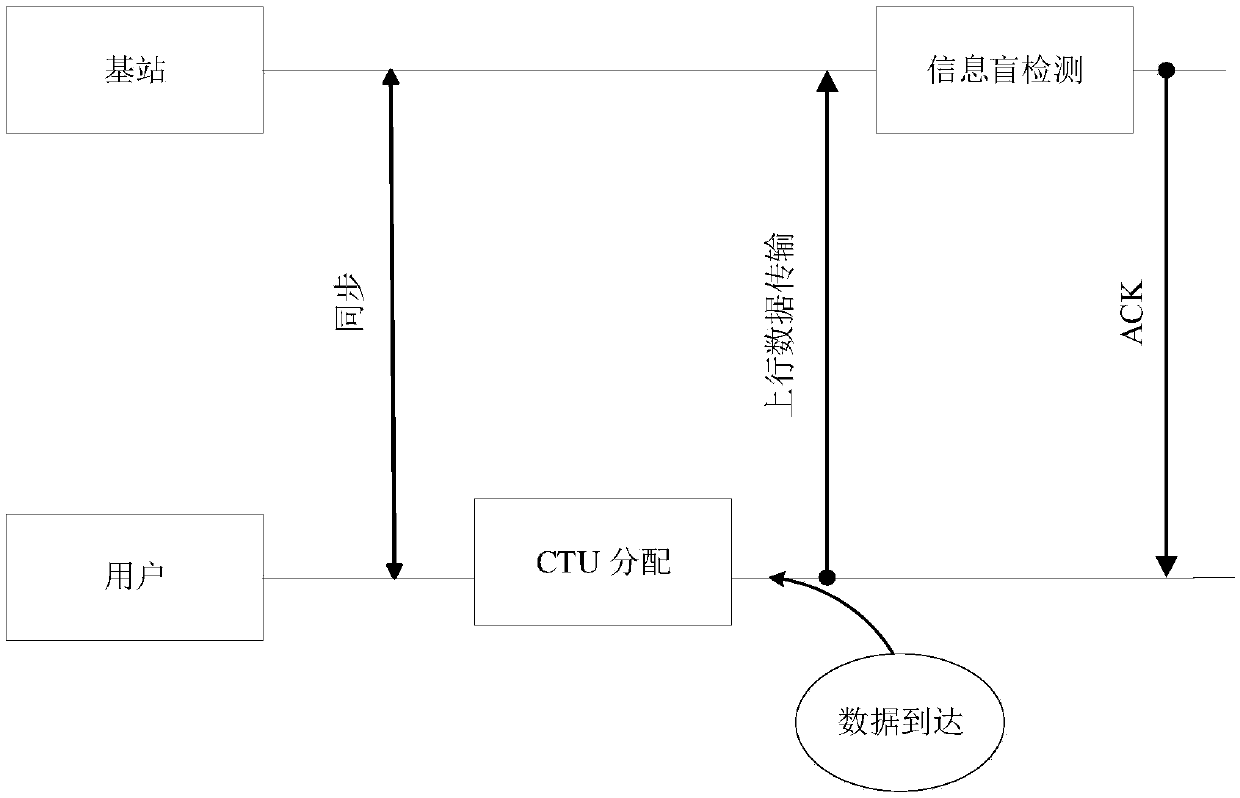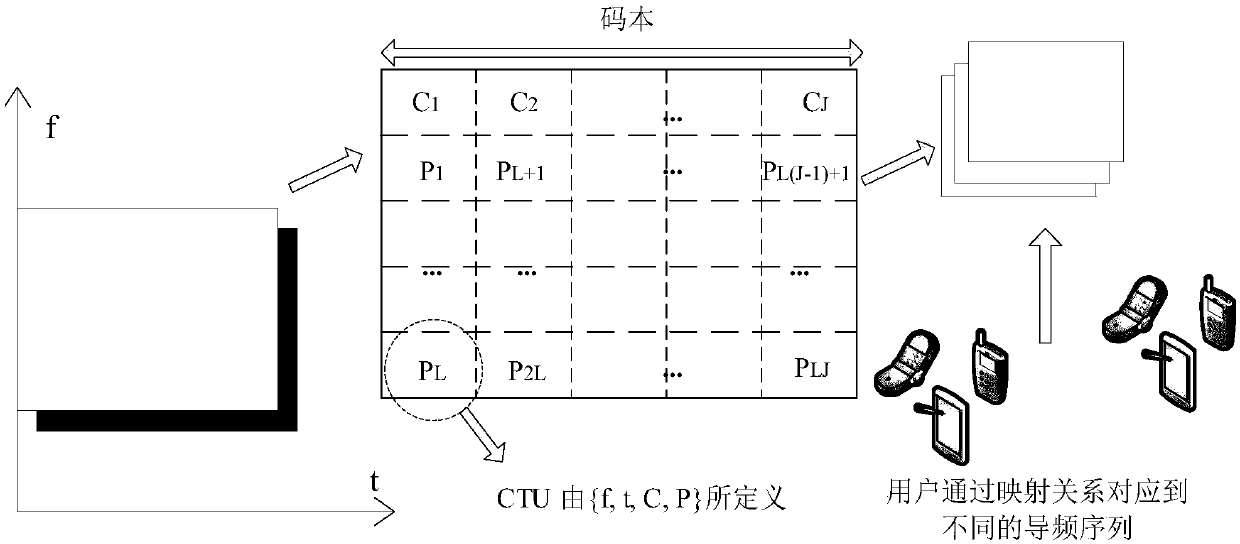User activity-based contention transmission unit (CTU) allocation method in uplink license-free SCMA
A technology of user activity and allocation method, which is applied in the field of CTU allocation in uplink authorization-free SCMA, can solve problems such as high computational complexity and high probability of CTU collision, and achieve low complexity, reduced collision probability, and reduced complexity Effect
- Summary
- Abstract
- Description
- Claims
- Application Information
AI Technical Summary
Problems solved by technology
Method used
Image
Examples
specific Embodiment approach 1
[0029] Specific implementation mode 1: The specific process of the CTU allocation method of the uplink license-free SCMA based on user activity in this implementation mode is as follows:
[0030] Therefore, in order to reduce the packet loss rate caused by CTU collision and further improve the sum rate of the entire uplink SCMA system, the present invention introduces user activity as an evaluation index to assist the base station in completing the allocation of CTU resources. The present invention considers the following Internet of Things scenario: the activity of each user is different, and their activity is in a quasi-static state, that is to say, the probability that each user is allowed to access within a period of time obeys a distribution of its activity. At the same time, the user's access probability within a period of time can also be used to estimate the user's activity in the next period of time. In addition, the present invention deduces the expression of CTU co...
specific Embodiment approach 2
[0068] Specific embodiment 2: The difference between this embodiment and specific embodiment 1 is that in the step 1, in the license-free uplink SCMA system, the average CTU corresponding to the L CTUs of N_length users is calculated in T' time slots Collision probability, the average CTU collision probability is simplified to obtain the NP-hard optimization formula; the specific process is:
[0069]
[0070] in,
[0071] g nl ={0,1} indicates the allocation relationship between the nth user and the lth CTU, if g nl =1, it means that the nth user is assigned to the lth CTU, otherwise if g nl = 0 means that the nth user and the lth CTU are not paired;
[0072] g n =[g n1 g n2 ... g nL ] T Indicates the allocation relationship vector of the nth user; T is the transpose;
[0073] g l =[g 1l g 2l ... g N_lengthl ] T Indicates the allocation relationship vector of the lth CTU;
[0074] W n (t) is the activity used to represent the probability that the nth use...
specific Embodiment approach 3
[0085] Specific implementation mode three: the difference between this implementation mode and specific implementation mode one or two is: set P in the step three co (m) represents the CTU collision probability of the first m users in the set N' obtained in step 2, ΔP(m)=[P co (m)-P co (m-1)] represents the CTU collision increment that occurs when the mth user is considered to access the license-free uplink SCMA system, and iteratively optimizes ΔP(m) to obtain the optimal solution g for each time m , according to each optimal solution g m , get the optimal solution set G'={g 1 ,...g m ,..., g N_length′}; the specific process is:
[0086] m=0, when the number of access users m≤L, it is not necessary to complete the CTU allocation through optimization calculation at this time, according to Just assign a different CTU to each user;
[0087] mod is to take the remainder;
[0088] When the number of access users m>L, the CTU collision increment that occurs when the mth us...
PUM
 Login to View More
Login to View More Abstract
Description
Claims
Application Information
 Login to View More
Login to View More - R&D
- Intellectual Property
- Life Sciences
- Materials
- Tech Scout
- Unparalleled Data Quality
- Higher Quality Content
- 60% Fewer Hallucinations
Browse by: Latest US Patents, China's latest patents, Technical Efficacy Thesaurus, Application Domain, Technology Topic, Popular Technical Reports.
© 2025 PatSnap. All rights reserved.Legal|Privacy policy|Modern Slavery Act Transparency Statement|Sitemap|About US| Contact US: help@patsnap.com



